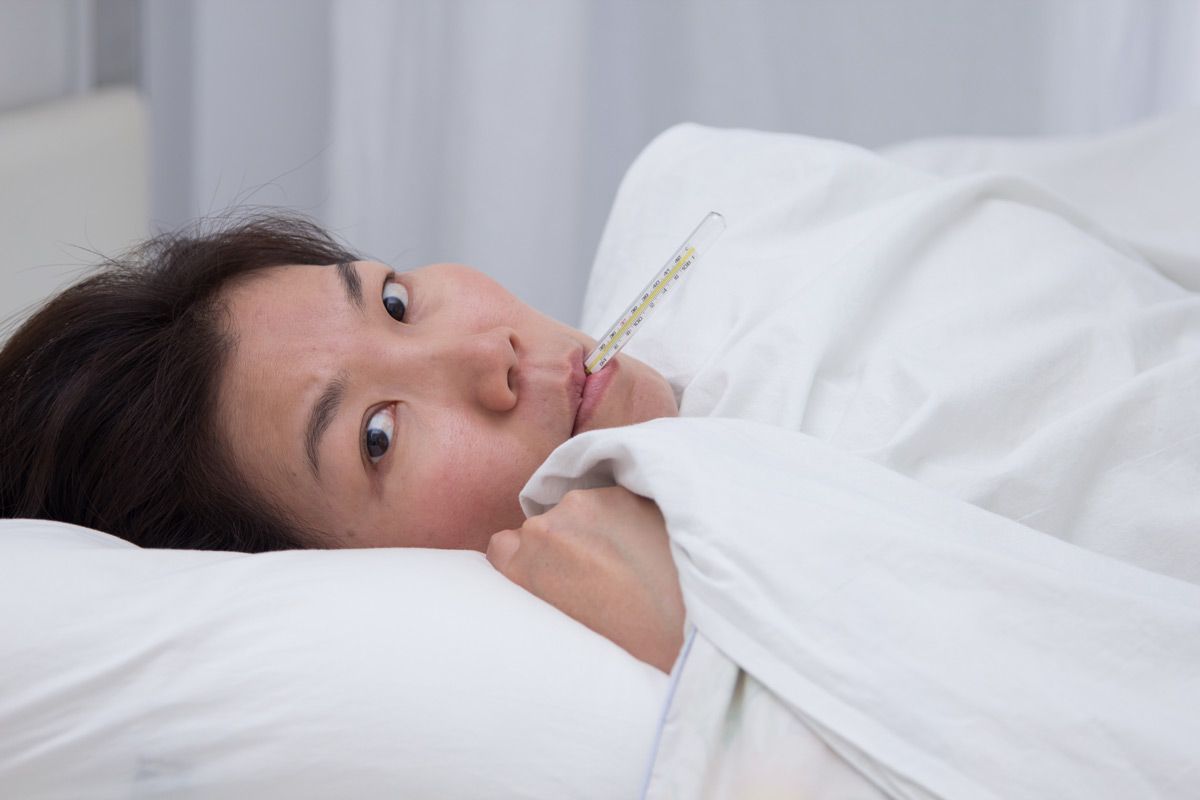If you are receiving cancer treatment, you may need to adjust how you think of fever.
Before your diagnosis, fever was just a sign that your body was doing its job and trying to fight off an infection. It was nothing to be concerned about unless it rose dangerously high.
But things are different now, and that fever may mean something else. Some cancers and cancer treatments can cause fever, and the number on your thermometer may not match the level of your risk. If your immune system is weak, you could have a very serious infection but only a slight fever, or maybe no fever at all. Even a hormone imbalance or disruption can cause fever.
What is a fever?
Fever, or pyrexia, is a higher-than-normal body temperature. It is usually a response to infection by bacteria or viruses, or to inflammation caused by disease or injury. Fever is one of you body's defenses. Raising your body temperature can kill some bacteria and viruses and can help your immune system respond faster and better. But fever is a symptom or reaction; it doesn’t tell us what is wrong. To identify the cause, your medical team will ask questions, examine you, and order tests such as blood and/or urine tests. The most common are a complete blood count (CBC) to see if your blood cell counts are abnormal, and blood cultures if infection is suspected.
The hypothalamus and how it works
Body temperature is controlled by a part of the brain called the hypothalamus. The hypothalamus works with the autonomic nervous system, the endocrine system, skin, muscles, sweat glands and blood vessels to regulate some body processes automatically. Working together, they control your body temperature, blood pressure, breathing, heart rate, body fluids and salt concentration without you having to think about them.
The hypothalamus gets messages from temperature receptors in your skin and blood and acts like a thermostat. It sets a temperature and then regulates your body processes to create or release heat to keep that temperature. For example, shivering creates heat. If your body temperature is too high, the skin and lungs help the body cool by sweating and exhaling warm air.
How a fever works
- Pyrogens cause your body’s “thermostat” to be reset to a higher temperature. Your body creates heat to reach that temperature.
- Blood vessels in your arms and legs constrict and redirect blood to the internal organs, which raises the temperature of the blood. (With less blood in your arms and legs, you may begin to feel cold and add more blankets or clothes. This reduces heat loss and helps create more body heat.)
- Liver activity increases and produces heat.
- You may begin to shiver, and your muscles will release heat.
- These processes continue until you reach the new “set point.” When there is too much heat, the hypothalamus tells your body to reverse the processes. Your blood vessels dilate, you begin to sweat and the fever “breaks.”
- Antipyretic drugs, such as aspirin and acetaminophen, may reset and lower the set point.
How does cancer cause a fever?
A tumor can produce pyrogens, a substance that causes a fever. Pyrogens may come from outside sources, such as bacteria, viruses, fungi, drugs and toxins. Cancer treatments can cause a fever directly or destroy white blood cells and weaken your immune system. Both can raise your risk for inflammation and infection. Medications such as steroids and morphine can also cause fever or affect your immune system.
Never miss another Cancer Talk blog!
Sign up to receive our monthly Cancer Talk e-newsletter.
Sign up!When should I tell my doctor I have a fever?
Call your doctor if you have a fever:
- 100.4° F (38°C) or higher
- with chills or shivering
- that does not respond to approved medications
- for more than 24 hours, or if it returns within 24 hours
- that prevents you from eating or drinking or causes vomiting
- and other symptoms that are new or getting worse
These are our general rules. Always follow your medical team's guidelines (you may need to report a fever at a higher or lower temperature than 100.4° F.) Other questions to ask:
- Is my treatment likely to cause fever — and why?
- What side effects do I need to report to you immediately?
- What side effects require me to go to the emergency room?
What should I do if I think I have a fever?
- If you start feeling hot or cold, or one and then the other, take your temperature every 2-3 hours and write down the results. If your temperature hits 100.4° F (38°C) — or whatever level your doctor specified — call your doctor.
- Do not take aspirin, ibuprofen/Advil®, or acetaminophen/Tylenol® unless your doctor has said it is OK.
- Drink a lot of fluids – especially water. Ice pops are a good choice if you have nausea. Avoid alcohol and caffeine.
- Don’t push yourself; take it easy and rest.
- Put a cold cloth or ice bag on your head if you feel hot or your head hurts.
If you have a fever and you’ve already spoken with your medical team, continue with fluids, rest and cold cloths. Now is an important time to make nutritious food choices. Even when we are in good health, our bodies burn calories to perform vital processes such as cell growth, breaking down substances to create energy, and eliminating wastes. This requires a constant supply of water and fuel – protein, carbohydrates and fats. When we are further stressed by fever, infection, cancer treatments or wound healing, the need for fuel increases.
Be smart and give your body the fluid and food that supply the building blocks it needs:
- Water and foods that contain a lot of water, such as chicken soup.
- Fresh fruits that provide vitamins and antioxidants.
- Protein-rich foods, such as eggs, poultry, fish, milk, meat, quinoa, beans, lentils, nuts/nut butters, cheese.
- Greek yogurts with live and active cultures that can provide probiotics and protein.
If you or a loved one is in treatment, take fevers seriously and deal with them right away.
“Normal” body temperature facts
- While the average is 98.6° F (36° C), individual temperatures usually fall between 97° F (36.1° C) and 99° F (37.2°C). Over age 65, the normal body temperature tends to be lower.
- Your temperature can vary about 1° F (0.5° C) during the day. Lowest temperature occurs around 6 a.m. and highest between 4 and 6 p.m.
- Temperatures taken rectally are 0.7° F (0.4° C) higher than those taken orally. Tympanic (ear) temps are accurate, but more variable than oral or rectal.
- Age affects your ability to regulate body temperature. Infants/young children may get a very high fever from slight infections. The elderly may only have a slight fever, even with a serious infection.
More about fevers and cancer
Drug therapy and fevers Preventing Infection in Cancer Patients



